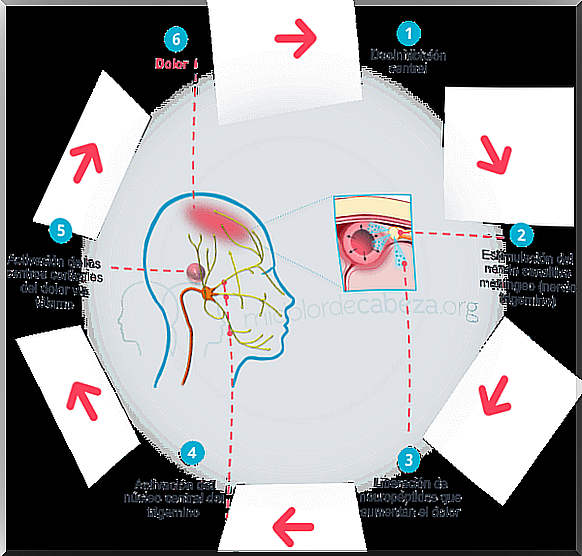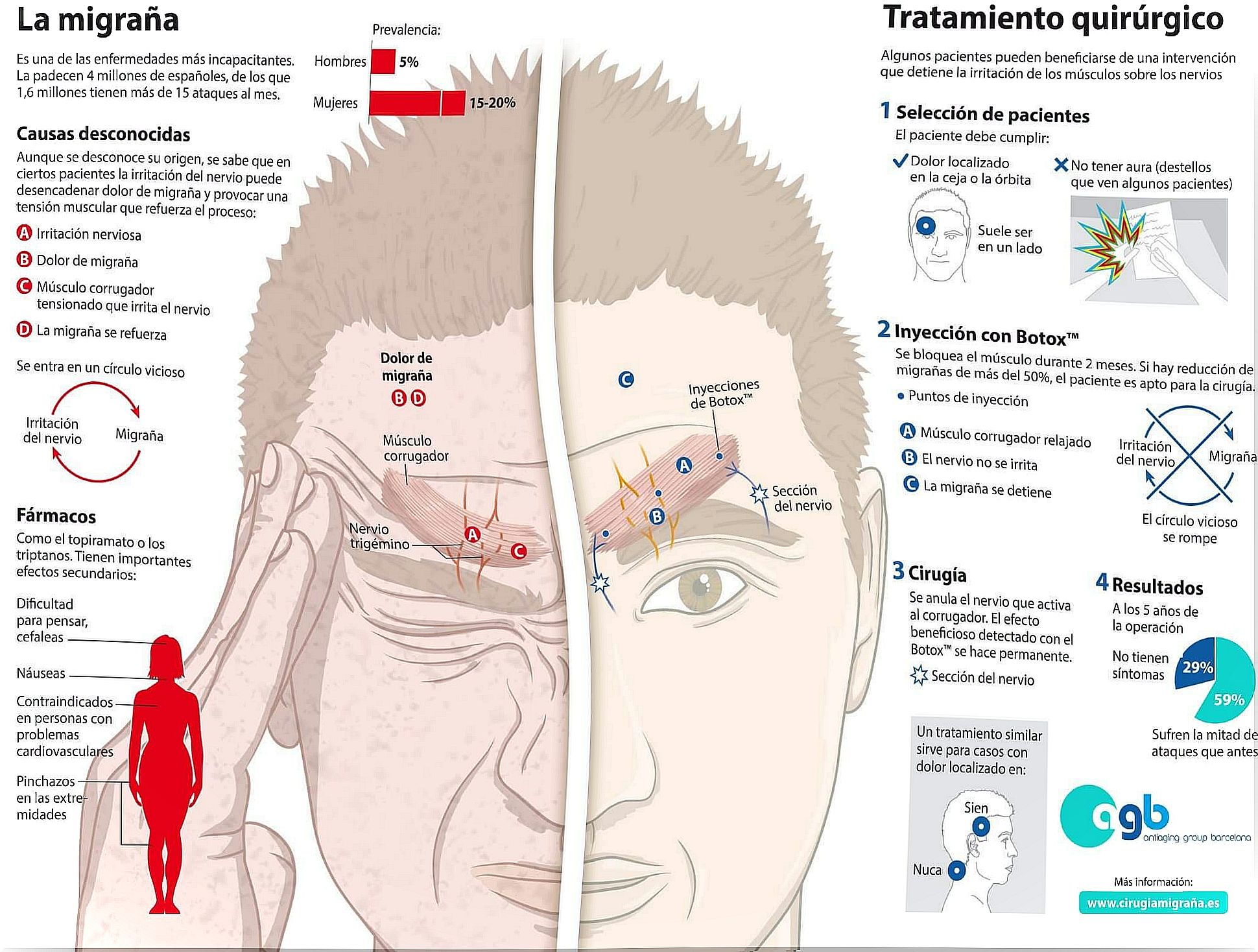A New Treatment For Chronic Migraines Is Developed
Chronic migraines affect 2% of the world population and have an incidence of onset between 12 and 15 days a month.
The word chronic does not mean that a person has this type of headache for 10 or 20 years. This type of migraine, unlike the episodic one, is persistent and completely disables the person for several days in a row throughout the month.
To the intense headache are added:
- Dizziness
- Vomiting
- Sensitivity to sunlight
- Sensitivity to loud sounds
- Accused physical fatigue that completely reduces the quality of life of these patients.
Treatment in these cases is generally multidisciplinary. Different types of medications are offered, food is taken care of and different therapies can be carried out depending on the particular needs of each person.
Now, from the Antiaging Group Migraine Unit in Barcelona (Spain) a new technique has been developed that, although it involves a small surgical intervention, frees the person from this suffering to the point of completely changing their life.
Chronic migraines, a very complex problem
According to neurologists themselves, people with chronic migraine do not always find the solution to their ailment. In fact, 7 out of 10 people say they do not receive adequate treatment, to the point that many of them opt for self-medication and the use of painkillers.
We are, therefore, before a complex problem that requires innovation, investment and a reorientation in treatments, to offer hope to these people who must face chronic migraines.

Now, if we ask ourselves now why there are patients who suffer from episodic migraines, others who suffer from chronic ones, and other people simply do not suffer any type of headache, it must be said that the answer is also complicated and depends on several risk factors.
- Hereditary factors. In most cases there is a genetic component that passes from mothers to daughters.
- Suffering from a certain neurological hypersensitivity, something that would also be in our genes and that would, for example, make exposure to different triggers such as stress, sunlight, differences in temperature or certain foods lead to headaches.
- Undergo certain surgical interventions, such as an operation to treat an aneurysm. One of the possible temporary or chronic sequelae is precisely the ongoing headache.
Something that we must bear in mind is that there are many patients who began suffering from migraine episodes from time to time and, with the passage of time, this migraine has become more and more frequent until it becomes chronic.
Likewise, there are also those who experience the opposite case, starting with a chronic migraine and leading to an episodic migraine spontaneously. To this day, the causes underlying these phenomena are unknown.
A new treatment for chronic migraines
As we pointed out at the beginning, this method of treating chronic migraines is based on a surgical intervention. Although it may scare you at first, in reality, the technique is much simpler than it seems.
A chance discovery
The procedure was discovered by chance in the United States in aesthetic medicine centers.
Those women who had undergone botulinum toxin treatment to erase frown lines, and who also suffered from chronic migraines, declared that, almost without knowing how, their headaches had disappeared.
- Since then, various studies have been conducted on the efficacy of surgical therapy for migraine, resulting in two possibilities:
- Simply inject “botox”
- Block the muscle under the eyebrow (known as the corrugator).
- The result was the following: when the pressure between the temporal, frontal, occipital and nasal nerves is released, the migraine disappears.
How the treatment is carried out
The Antiaging Group’s Migraine Surgery Unit, in collaboration with the Migraine Surgery Center in Germany, has developed this technique with which thousands of people have already been treated.
It should be said that it is not always 100% effective, that is, chronic migraines disappear, but we can be left with occasional headaches (with a frequency of once a month, for example).
However, and if you are interested, do not hesitate to consult with your doctor about the convenience or not of this treatment.

These would be the steps:
- Medical consultation to know the case of each patient.
- Testing the patient for botulinum toxin to determine the person’s suitability for therapy.
- Follow up for two weeks to see if the person accepts or rejects the botox in their body.
- The operation itself is carried out. It lasts an hour, and the surgery is nothing more than a series of pricks in the browbones to “release” those peripheral nerves that, when inflamed due to tension, generate migraine.
- General anesthesia is applied, and the postoperative period is quite fast.
After two weeks of rest, the patient can lead a normal life.









